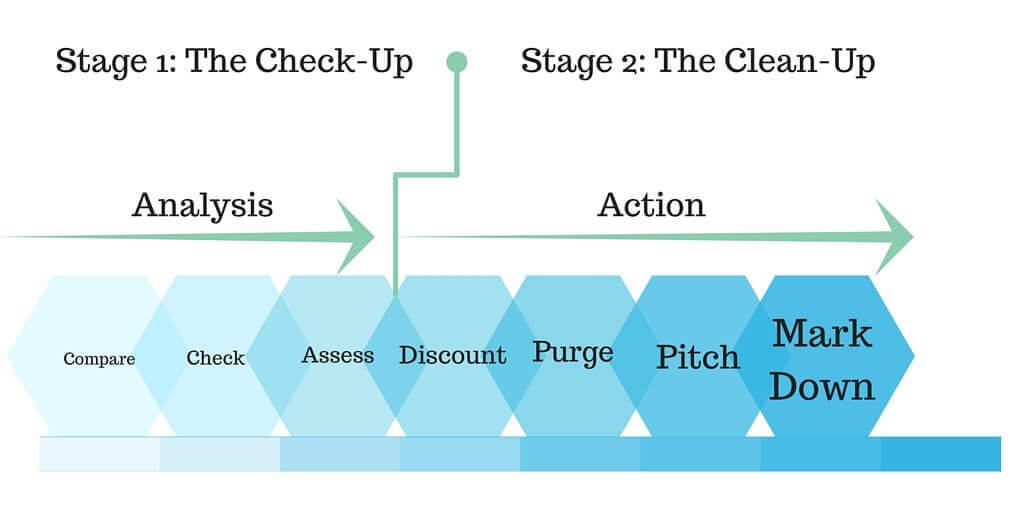You wouldn’t be the first Amazon seller to have disappointing sales in Q1 on Amazon, and you certainly won’t be the last. But maybe some good could come out of this hiatus. We’ve come up with a checklist for you to use as you check-up on sales and go over your weaknesses.
We can think of at least 7 things you should do when sales are down, and we’d like to recommend that you go through each one, step by step. Taken in two stages, they can help raise your sales or just iron out small issues until your sales pick up on their own. Either way, they’re bound to make a difference.
STAGE 1. Check-ups and Analysis
Compare
How were your sales this time last year?
In retrospect, you may find that this is a replay of last year’s performance. If your monthly year over year rates are similar, it could simply be down to seasonal market fluctuations.
If not, then it could be due to your inventory. Do you have any new restrictions on Amazon, or have you switched fulfillment channels recently? Perhaps you’re stocking less inventory than you did 12 months ago, or it’s not as eclectic as it was back then. Whatever the issue, you’re likely to find it with a simple comparison.
Check
Have you missed something in your business reports?
Inventory checkups and business reports go hand in hand. Reports include page view results that you can compare to the ones you had when sales reached their peak. You may find that you need to improve the overall quality of your catalog pages for more visibility. They can also tell you if you stopped selling a very popular item.
Another useful bit of information you can extract from these reports is your conversion rate (specifically how many people who view your product actually end up buying it). Compare this result to previous ones, and you may find that it’s not all about performance.
If you can’t pin-point a specific event on a timeline, and you’re sure the change isn’t performance-related, then negative product reviews could also be a factor. Check your product pages for recent reviews, and let Amazon know if not all of them are relevant and referring strictly to this product.
Assess
Is your offer still relevant and competitive?
Give similar offers on Amazon and elsewhere the quick once over, to figure out if any market changes could influence your potential customers. You could be facing greater competition now than you did in previous years, or your prices may be higher to cope with rising expenses. Determine who has lower prices, and what is your items’ price evolution in time.
If prices are not an issue, consider the possibility that similar or substitute products could be taking a piece of the pie.
STAGE 2. Clean-Up and Other Actions
Discount
Do you give back?
Rather than process returns and deal with dissatisfied customers, you could offer them discounts on current or future orders. Also, consider waiving shipping costs for multiple units, or offering loyal customers free shipping with any order.
2. Purge
How fresh is your inventory?
Getting rid of excess merchandise can be a daunting task, especially if it’s been on the shelf for a while, and you haven’t had enough time to check it before. But you may be able to shake off your worries and your extra stock in one fell swoop by giving away unwanted products as add-on items. As you throw these unwanted items in as small giveaways, you may find that complimentary products eventually give your sales a little boost.
3. Promote
Have you tried promoting your product?
There’s not much you can do on Amazon in the way of product pitching. Still, the little that can be done is easy.
Browse through your database to find return customers. Then get out there and let them know what a bargain they’d be getting.
If you’re confident your product will interest them, try some promotional offers (like 3-for-2), bundles (send in a complementary item, like a case, a charger or a stand for the product) and freebies (giving away the product outright in the hope that the customer would want another unit when this one is used up).
But you can also try reaching out to prospective customers. Amazon Sponsored Products can help you promote your product to millions of people from across the globe.
Mark Down
How does your product stand out?
Let’s face it, Amazon sellers who don’t do Private Labeling rarely monopolize a listing, and there’s not much you can do to set your product apart from anyone else’s. If all else fails, roll back your prices every now and then, or try some new pricing strategies. Now’s the time to experiment. Use an automated repricer to make sure you minimize your losses.







